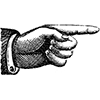Chestnut Rocking Horse

Originally commissioned by Lieutenant Colonel and Military Knight of Windsor, Raymond Giles, as a surprise 70th birthday present for his wife Peggy - this beautiful horse was made to match their Four Poster Bed from Chestnut wood felled in Windsor Great Park.
Description
This gorgeous Chestnut rocking horse by The Stevenson Brothers from Bethersden, England is based on a 1910 design originally manufactured by the legendary F.H. Ayres, purveyor of the finest rocking horses during the Victorian era, and prized by children of all ages and British royalty alike.
Made from Chestnut wood, the horse is hand carved to show musculature and constructed using the traditional Victorian method of mortise and tenon, ensuring a sturdier connection between joints than the common dowel and peg style that weakens after years of riding. The horse is fitted with tanned English cowhide leather tack, red leather saddle top and royal red saddle blanket. When this Chestnut rocking horse's natural finish is polished, its takes on a beautiful reddish brown hue. And, when rocked in the light, the grain tends to change color. Mounted on a Victorian safety stand, designed in 1878 by PJ Marqua of Cincinnati, Ohio, the horse comes complete with a real horse hair mane and tail and hallmarked brass plaque bearing the makers name, date and unique number.
Available to discerning owners, this heirloom quality rocking horse is an investment in authentic English craftsmanship from the most highly regarded makers in the field. Beautiful in any setting, this truly timeless piece of equine sculpture is rideable by children of all ages.
Green Policy: Working with hardwoods brings with it an environmental responsibility, which the brothers honor whenever possible, timbers are bought from suppliers supporting the code of conduct of the International Tropical Timber Organizations. The timber used by Stevenson Brothers comes from plantations with a sound replanting policy.
More to the Story
Though small clay horses on wheels have been discovered in graves from as early as 1200 B.C. (perhaps for budding knights to practice their jousting skills), the first toy horse that could be ridden was the hobby, or stick, horse that dates to Greek and Roman times. One story has it that Socrates himself, frolicking with his young sons, was spotted cantering about on a pole adorned by a horse head.
The craftsman who first placed a wooden horse on rockers—a likely outgrowth of the cradle—is unknown, but by the end of the 18th century, rocking horses had evolved into ornately crafted, fiery chargers at full gallop, heads outstretched, horsehair manes and tails flowing, glass eyes gleaming. Queen Victoria’s nine children insisted on bringing a dapple-gray on family vacations. Napoléon’s young son, Joseph-Charles-François, treasured his painted pony. Sweden’s King Karl XV and King Prajadhipok of Thailand rode rocking horses in their youth (as did the current heir to the British throne, Prince Charles, on a model carefully selected for him by Queen Elizabeth II).
For a long time, rocking horses were the purview of the rich. Then, with the increasing prosperity brought on by the Industrial Revolution, they became nursery fixtures of children born to an emerging middle class. There have been many permutations. In Germany, wooden and papier-mâché horse frames were often covered with calfskin. In bicycle-crazed France, velocipede rockers—wooden horses mounted on tricycles—were all the rage. Inventive Victorian manufacturers made horses with multiple seats to accommodate up to three children at a time, a model the Stevenson brothers have revived. In the United States, toymakers fashioned complicated if failure-prone spring-loaded horses that approximated a trotting motion.
Americans also produced some of the more flamboyant designs, adopting the style of carousel horses popular at fairgrounds and carnivals. An American also scored a safety breakthrough: in 1878, to guard against horse and rider going head over heels, not to mention scratching floors, bumping into furniture or squashing small fingers and toes, Philip Marqua of Cincinnati patented a safety stand to which the horse’s legs are attached. (Purists, of course, disdain the stands.)
As immigrants poured into this country throughout the 19th century, craftsmen arriving from every corner of Europe applied their talents to America’s rocking horses. Dozens of workshops, many of which employed Old World artisans, sprang up between the 1850s and the turn of the century. (The young Dwight Eisenhower earned pocket money sanding rocking horses at a now-defunct shop in Abilene, Kansas.) Few of these studios endured, in part because skilled wood-carvers flocked to the more lucrative market in carousel horses. One rocking horse manufacturer from that era, the Whitney Reed Corporation of Leominster, Massachusetts, survived for nearly 100 years, only to succumb in the 1950s to postwar parents’ preference for such trendy playthings as hula hoops and Betsy Wetsy dolls.
Dimensions
- Large: 56" L x 18" W x 48" H
- Holds up to 250 lbs
- Extra Large: 70" L x 22" W x 58" H
- Holds up to 320 lbs
Safety & Care
- This rocking horse is made from chestnut.
- Please adhere to weight limits and ensure ample space around the horse when riding to avoid excessive wear or damage.
Shipping & Customizations
Due to the size and the ability to customize, this item will take up to 10 weeks to ship to you. Because this item is tailored for you we charge separately for shipping and will reach out to you to receive additional shipping information.
As with all of Stevenson Brothers' rocking horses, you also have the ability to custom build your very own horse: choose between the standard safety stand or the coach spring base, the type of wood carved, the type of stand your horse is mounted on, the fittings, whether or not and/or how you want your horse painted, and the colors of the leather saddle and suede saddle blanket. In addition, you can choose to include a secret locking compartment and inscribe your very own message on the included plaque. To discuss all of your options, please contact us directly at +1 610-649-2909.































































































